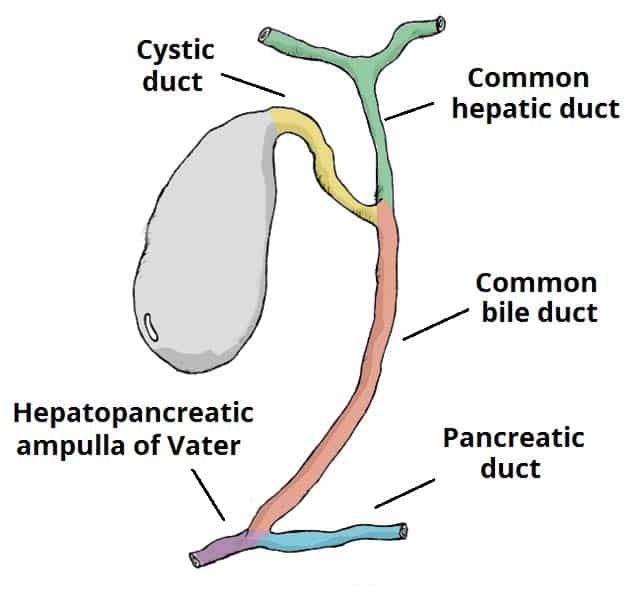Gall bladder
Gall bladder
The gall bladder is a pear-shaped sac attached to the posterior surface of the liver by connective tissue. It has a fundus or expanded end, a body or main part and a neck which is continuous with the cystic duct.
Bile secreted from liver is stored in gallbladder. The capacity of gallbladder is approximately 50 mL Gallbladder is not essential for life and it is removed (cholecystectomy) in patients suffering from gallbladder dysfunction.

Structure-
The gall bladder has the same layers of tissue as those described in the basic structure of the alimentary canal, with some modifications. Peritoneum covers only the inferior surface. The gall bladder is in contact with the posterior surface of the right lobe of the liver and is held in place by the visceral peritoneum of the liver. Muscle layer. There is an additional layer of oblique muscle fibres. Mucous membrane displays small rugae when the gall bladder is empty that disappear when it is distended with bile.
Blood supply
The cystic artery, a branch of the hepatic artery, supplies blood to the gall bladder. Blood is drained away by the cystic vein which joins the portal vein.
Nerve supply
Nerve impulses are conveyed by sympathetic and parasympathetic nerve fibres. There are the same autonomic plexuses as those described in the basic structure.
Functions of the gall bladder
Major functions of gallbladder are the storage and concentration of bile.
Storage of Bile
Bile is continuously secreted from liver. But it is released into intestine only intermittently and most of the bile is stored in gallbladder till it is required.
Concentration of Bile
Bile is concentrated while it is stored in gallbladder. The mucosa of gallbladder rapidly reabsorbs water and electrolytes, except calcium and potassium. But the bile salts, bile pigments, cholesterol and lecithin are not reabsorbed. So, the concentration of these substances in bile increases 5 to 10 times.
Alteration of pH of Bile
The pH of bile decreases from 8 – 8.6 to 7 – 7.6 and it becomes less alkaline when it is stored in gallbladder.
Secretion of Mucin
Gallbladder secretes mucin and adds it to bile. When bile is released into the intestine, mucin acts as a lubricant for movement of chyme in the intestine.
Maintenance of Pressure in Biliary System
Due to the concentrating capacity, gallbladder maintains a pressure of about 7 cm H2O in biliary system. This pressure in the biliary system is essential for the release of bile into the intestine.
Relaxation of the hepatopancreatic sphincter (of Oddi) is caused by CCK and is a reflex response to contraction of the gall bladder.